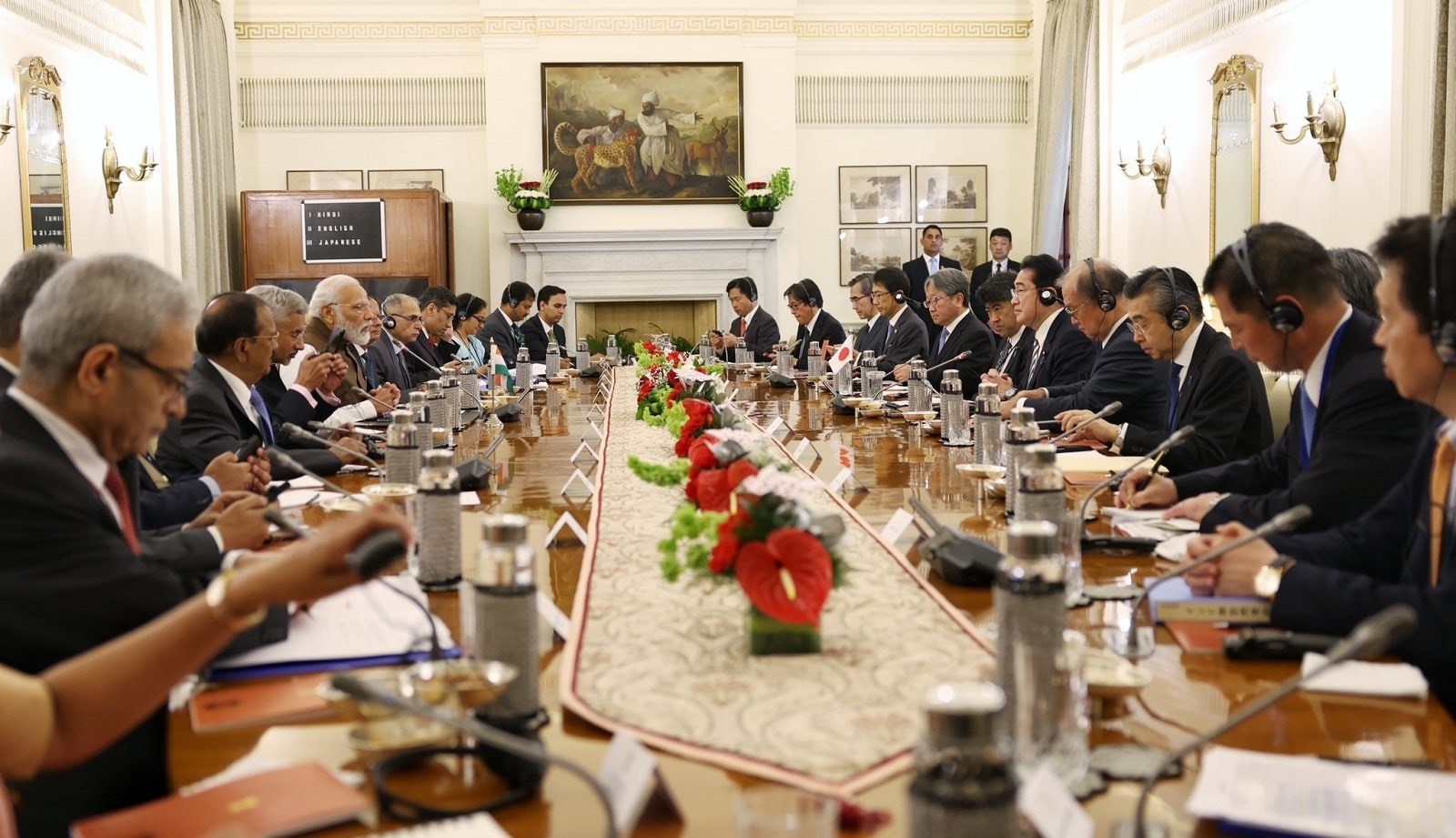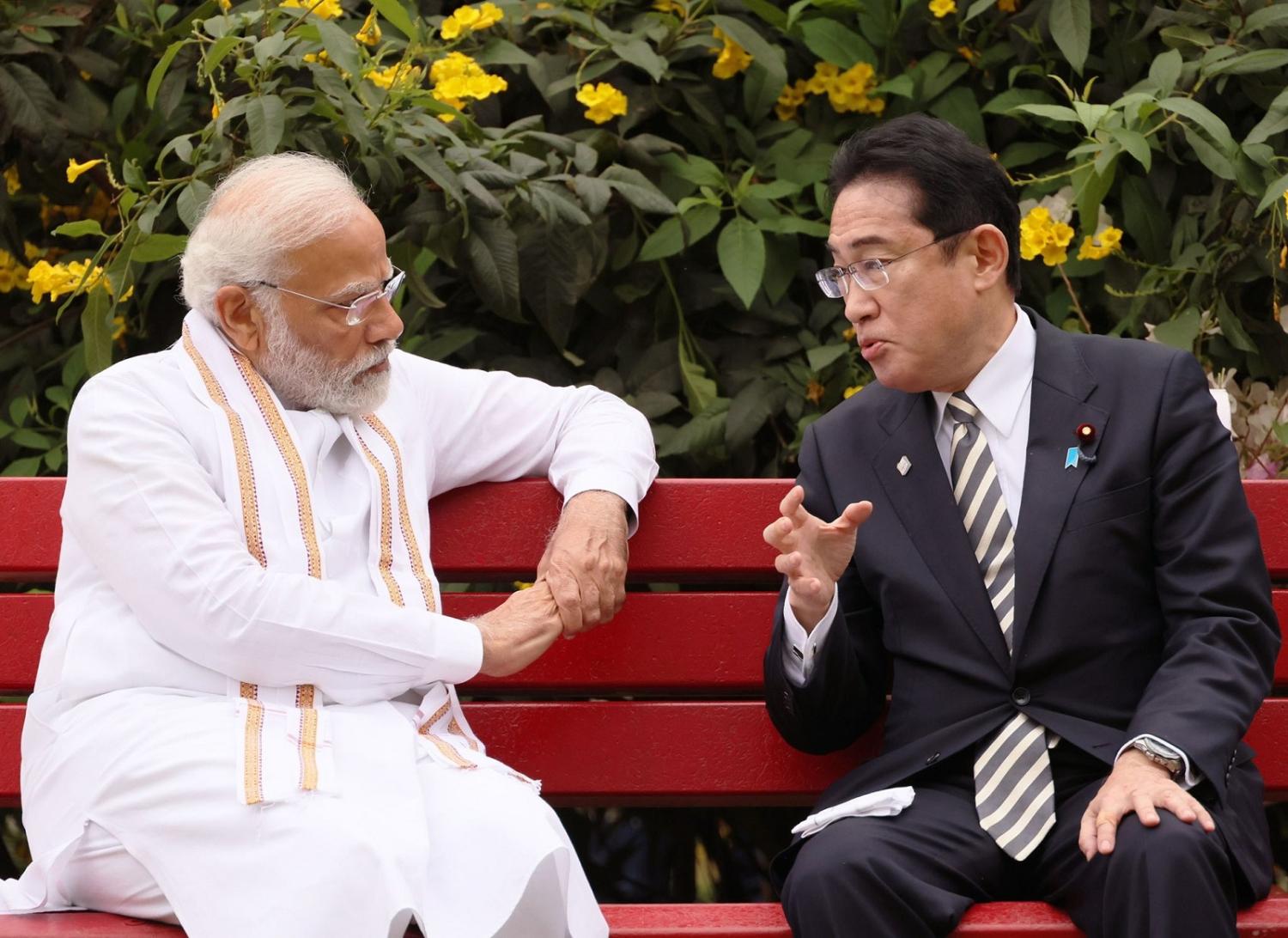Japanese Prime Minister Fumio Kishida has declared India as “indispensable” to the vision of a “Free and Open Indo-Pacific”. This echoes former Prime Minister Shinzo Abe’s landmark speech to the Indian parliament in 2007, which has become the foundational principle for the FOIP concept that guides the Quadrilateral (Quad) grouping involving Japan, India, Australia and the United States.
Recognising India’s role as a key democratic balancer in the region, Abe actively pursued deeper bilateral ties during his two tenures as head of the Japanese government. He established a close personal rapport with Indian Prime Minister Narendra Modi, and played an instrumental role in persuading New Delhi to embrace the FOIP concept. On 9 July 2022, India observed a day of national mourning in honour of Abe who was assassinated a day earlier, recognising his crucial contributions to bilateral relations.
There is little doubt that the Kishida administration intends to carry on the late Japanese leader’s mandate in forging closer ties with India. During his two-day visit to New Delhi last week, Kishida unveiled a plan to expand regional security and economic cooperation based on four main pillars: promoting the rule of law and opposing unilateral changes to the status quo by force; “realistic and practical cooperation” on Indo-Pacific issues; connectivity and economic growth; and expanding security initiatives from the traditional maritime realm to the aerial domain.
In December 2022, the Japanese government approved three new strategy documents: the National Security Strategy (NSS), the National Defense Strategy (NDS), and the Defense Buildup Program, outlining the country’s response to regional and global security challenges in the next decade, including bolstering self-defence capabilities. This builds upon Japan’s steady move towards greater security activism, constituting a paradigm shift from its postwar pacifist policy.
The new NSS describes China as the “greatest strategic challenge”. Japan has conducted hedging against an increased Chinese threat and the decline of the United States as a global hegemonic power and sees India as pivotal in this strategy. Despite not being a US ally within the Quad, for Japan, India is the only other Quad country to be engaged in ongoing territorial disputes with China. As such, New Delhi shares Tokyo’s concern of securing borders against Chinese assertiveness.

Besides regional security considerations, Kishida’s choice to relaunch the FOIP strategy also comes against the backdrop of the war in Ukraine and as Indo-Pacific countries emerge from the shadow of the Covid-19 pandemic. India’s hesitance to criticise Russian aggression in Ukraine has raised questions about potential cracks in the Quad’s united front on global security issues.
Japan has imposed sanctions on Russia, as has Australia and the United States, while India has refrained from adopting a hard stance and continued to deepen economic ties with Russia. Rather than seeking values-based partnerships grounded on similar democratic and liberal worldviews, it is clear that India continues to favour an agile, issues-based approach. This is not surprising given India has a history of non-alignment and cautious foreign policymaking intended to serve its strategic purpose.
New Delhi’s approach remains interests-driven and this is something that the other Quad members, including Japan, have to contend with delicately. Nevertheless, India’s bilateral relations with Japan, Australia and the United States have matured and the grouping is increasingly entrenched in cooperation across areas beyond the ambit of traditional security. A lot of room remains for the India-Japan strategic partnership to play a constructive role, especially in fostering North-South cooperation on vital issues including the environmental crisis, poverty alleviation, food and energy security, the impact of digital technologies, and pandemic recovery.
India and Japan lead the G20 and G7 respectively this year, presenting an opportunity for the two Asian nations to explore synergies in multilateral efforts to tackle these pressing challenges. India’s G20 presidency aims to address issues of common concern for the Global South such as securing funding mechanisms for critical physical and digital infrastructure, while the G7 has expressed its commitment to increase funding into infrastructure for developing countries and to improve global food security. Japan has taken the lead and has announced US$75 billion worth of infrastructure and security assistance for the Indo-Pacific.
During the visit, Modi accepted Kishida’s invitation to the G7 summit in May, which could improve coordination between G7 and G20. There appears to be enough political will within both the Japanese and Indian leaderships to engage the Global South, which not only renews attention to their imminent challenges, but could also increase overall confidence in multilateral mechanisms.

